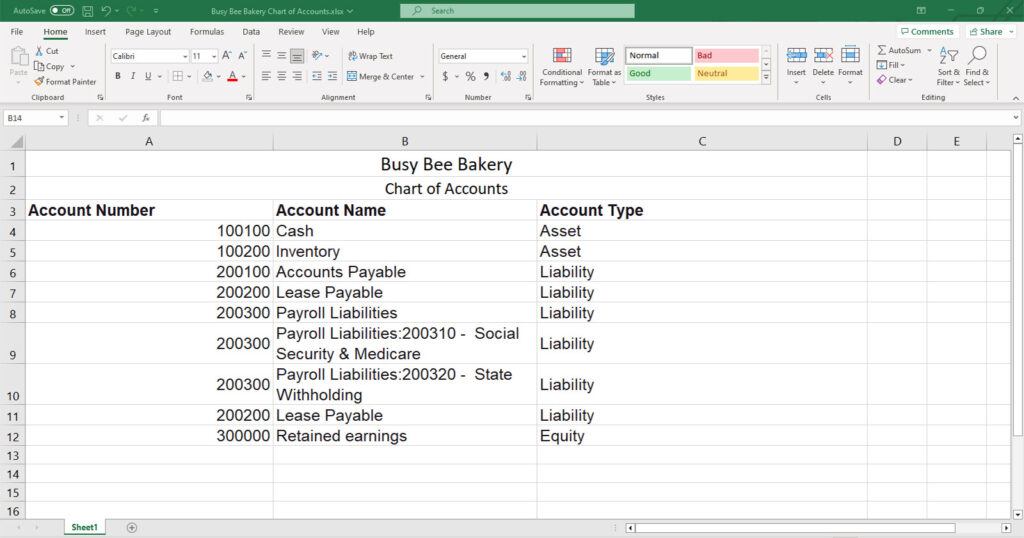You might be familiar with the basic accounting equation which says assets equal liabilities plus equity. We are only going to look at the equity portion and explain what equity means. Let’s demystify equity and by the end, any beginner should be able to understand it.

What Does Equity Mean? (A Definition of Equity)
Equity is the amount the owners or shareholders own in the business. That is why you will sometimes hear it called owner’s equity or shareholders equity. Essentially it is the difference between assets and liabilities. This is shown by the accounting equation. That number, the difference between assets and liabilities is the residual amount left in the company after liabilities are taken into consideration.
Equity: Debit or Credit Balance
When looking at the balance sheet, you’ll notice that equity has a normal credit balance. That is to say – credits will increase equity and debits will decrease equity. If you were to look at a T account then the normal balance would be on the right side of the T account as a credit for equity.
How to Account for Equity
When an owner adds money to the business then there needs to be an increase in equity. As an owner takes money out in a sole proprietorship or limited partnership then equity is reduced with draws.
If a company is public but repurchases stock then it would decrease stockholder equity. Another common transaction that would reduce equity is paying dividends. While it doesn’t directly hit equity, it would affect retained earnings which is a part of equity. We’re going to get to a few equity transaction examples just now, so stick with us!
Read More:
Are Accountants in Demand? Here’s The Scoop
Equity Journal Entry (Stockholder Equity JEs)
Let’s assume Carl’s Construction Company (“CCC”) is just opening. The owner (Carl) puts in $200,000 of his savings on January 7th. We will increase common stock and increase cash.
After a year in business, Carl has a good year and his retained earnings increase $100,000 from the business. He declares a cash dividend for $10,000 on September 15 and pays it out on October 14th. We will record these two transactions as well.
Issuance of common stock at par.
| Date | Account | Debit | Credit |
| January 7 | Cash | $200,000 | |
| Common stock | $200,000 |
Declare a cash dividend.
| Date | Account | Debit | Credit |
| September 15 | Retained earnings | $10,000 | |
| Dividends payable | $10,000 |
Payment of cash dividend.
| Date | Account | Debit | Credit |
| October 14 | Dividends payable | $10,000 | |
| Cash | $10,000 |
By following these transactions for a year, we would see that equity first increased by the $200,000 paid in. It further increased by $100,000 of retained earnings and then it was reduced by $10,000 in dividends paid out.
List of Equity Accounts (Common Equity Accounts)
Equity is made up of a bunch of individual accounts. These include:
- Common stock
- Preferred stock
- Treasury stock
- Retained earnings
- Other Comprehensive earnings
Retained Earnings and Equity (How they Work Together)

Many people hear retained earnings and believe that it is equity. Retained earnings are part of equity. It’s important before we end our breakdown equity that we make this distinction. Equity is not only retained earnings. As we have shown above, there are quite a few accounts that came make up equity and retained earnings is just one of them.
That being said, when retained earnings increase, equity increases. As retained earnings decrease, equity decreases.
Read More:
What are the Chart of Accounts? (Explained)
Let’s Recap Accounting Equity
At a high level, here are the key points we covered regarding equity:
- Equity is the difference between assets and liabilities
- It is the residual left to the shareholders and owner after the liabilities are deducted from assets.
- Equity has a normal credit balance. Credits will increase equity and debits decrease equity.
What is Equity in Accounting? Final Thoughts
As a business owner or stakeholder, you want to see equity increase. It is what you own after all. While accounting for equity can get complex with journal entries, we have just scratched the surface. You should at least now understand how to book a few transactions, what it is and how it is recorded. Now you are ready for some more complex topics!



